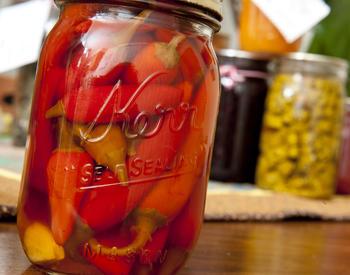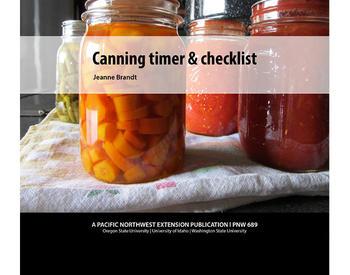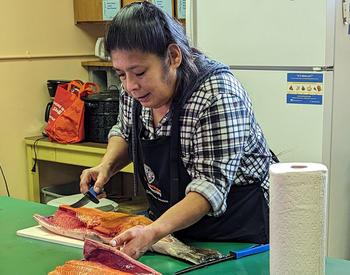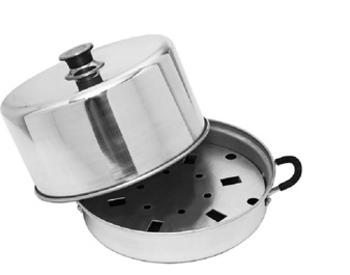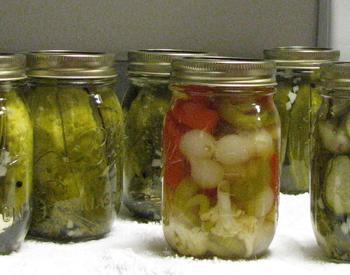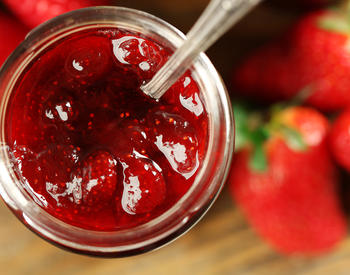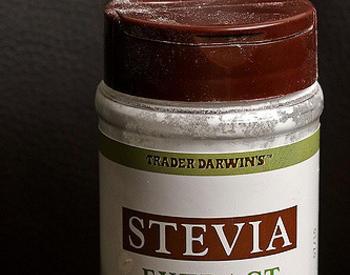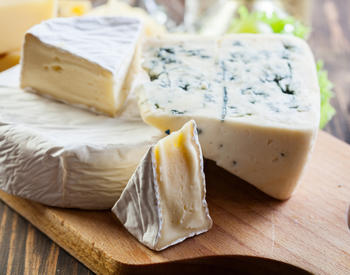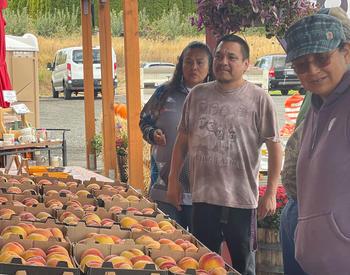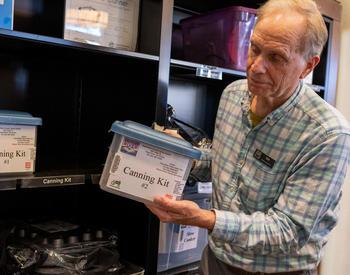Download this publication as a PDF
Low- or no-sugar-added fruit spreads
Low- and no-sugar jams and jellies are becoming more popular as people are changing their diets and reducing their intake of sugar. Traditional jam and jelly recipes call for a substantial amount of sugar so that the products jell, or thicken. The sugar also acts as a preservative, so the products could be stored for long periods of time without spoiling.
However, over the past few years, many commercial pectin products have been developed for successfully making low- or no-sugar fruit spreads at home. It's important to use one of the commercial pectin products meant for low or no sugar rather than reducing the amount of sugar called for in regular jam and jelly recipes for the product to thicken.
These newer, specially modified products are labeled as "light," "less sugar needed," or "no sugar needed." The pectin package will come with recipes that give options for using less sugar, no sugar or alternative sweeteners, such as sucralose. Some of the products have instructions for using honey or agave as a sweetener.
Be sure to check the package for the specific options ordered by that pectin product and follow the manufacturer's directions that come with the product. Using these pectin-added methods allows you to process the jars of jams and jellies and store your reduced-sugar products at room temperature. Products made with Clear-Jel or gelatin as a thickener need to be refrigerated.
Low-methoxyl pectin
Low-methoxyl pectins are natural pectic substances derived from circuits fruits. While regular pectins depend on sugar and acid to form a gel, low-methoxyl pectins form a bond with calcium ions in the absence of sugar and acid. The commercial pectin products on the market include a form of calcium in a separate packet in the package. If low-methoxyl pectin is purchased in bulk as marketed in health food stores, you need to also purchase both the pectin and the calcium product needed to mix with it. When using these products, it is important to follow the manufacturer's directions that come with the product.
Natural sweeteners
To make an all-fruit spread without added sugar, you can use concentrated, frozen white grape or apple juice as the natural sweetener. For every 3 cups of crushed fruit or juice, add 1 cup of concentrated fruit juice. The amount of concentrate can be adjusted to suit your taste.
You'll need to read the labels on the fruit juice concentrate. Some products have fructose or other sweeteners added, whereas others are all-natural fruit juice. Different brands also have different degrees of sweetness.
Artificial sweeteners
People on therapeutic diets (such as diabetics) should check low-sugar jam instruction sheets or sugar-substitute package labels for information on artificial sweetener use.
Preparing and processing
Follow the preparation instructions in the pectin package. Process low- and no-sugar spreads in a boiling water canner for 10 minutes. After the product is opened, it should be stored in the refrigerator.
Caution: Low-sugar spreads should only be made from fruits (which contain acid), since these products don't include enough sugar to act as a preservative.
Other low-sugar spread alternatives
Fruit spreads using Clear-Jel1
When making fruit spreads thickened with Clear-Jel, make small batches and store in the refrigerator.
Basic recipe
- 1/4 cup plus 1 tablespoon Clear-Jel
- 1/2–1 cup sugar (more or less depending on sweetness desired)
- 2 cups crushed fruit or juice
- 1 tablespoon bottled lemon juice
Directions:
- Mix sugar and Clear-Jel. If sugar is omitted, mix Clear-Jel with a small amount of cold fruit juice in a blender.
- Combine the sugar mixture with the fruit or juice in a large saucepan.
- Cook on high heat until the mixture comes to a boil, stirring constantly. Add lemon juice and boil for 1 minute.
- Pour into half-pint or pint jars. Let cool and store in the refrigerator.
Note: If the mixture is too thick, add a small amount of juice; if too thin, mix a little more Clear-Jel with a small amount of cold juice or water and add to the mixture. Bring to a boil. Spread will thicken as it cooks. You can gauge the thickness as the fruit spread is cooking.
For a no-sugar spread, concentrated fruit juice can be used in place of some of the juice in the recipe.
Fruit spreads thickened with gelatin
Unflavored gelatin can be used to thicken fruit pulp or juice to make unsweetened jams and jellies. These products have a texture similar to gelatin desserts. They must be stored in the refrigerator and used within a month. Do not process jams and jellies made with gelatin.
Basic recipe (makes 1 pint)
- 1 1/2 teaspoon unflavored gelatin
- 1 1/2 tablespoon cold water
- 3 cups crushed prepared fruit
- 1 tablespoon lemon juice
- Sugar or honey can be added to taste
Directions:
- Soften gelatin in cold water.
- Combine fruit and sweeteners in a saucepan. Place over high heat and stir constantly until the mixture comes to a boil.
- Remove from heat, add softened gelatin; return to heat and continue to cook for 1 minute.
- Remove from heat; blend in lemon juice.
- Ladle into clean jars. When cool, store in the refrigerator and use within a month.
Source: OSU Master Food Preserver Program.
Related publications
- 1Clear-Jel is a waxy cornstarch that has been chemically modified to produce a good consistency even after heating. Ask your county Extension office about the availability of regular (not instant) Clear-Jel in your area.
